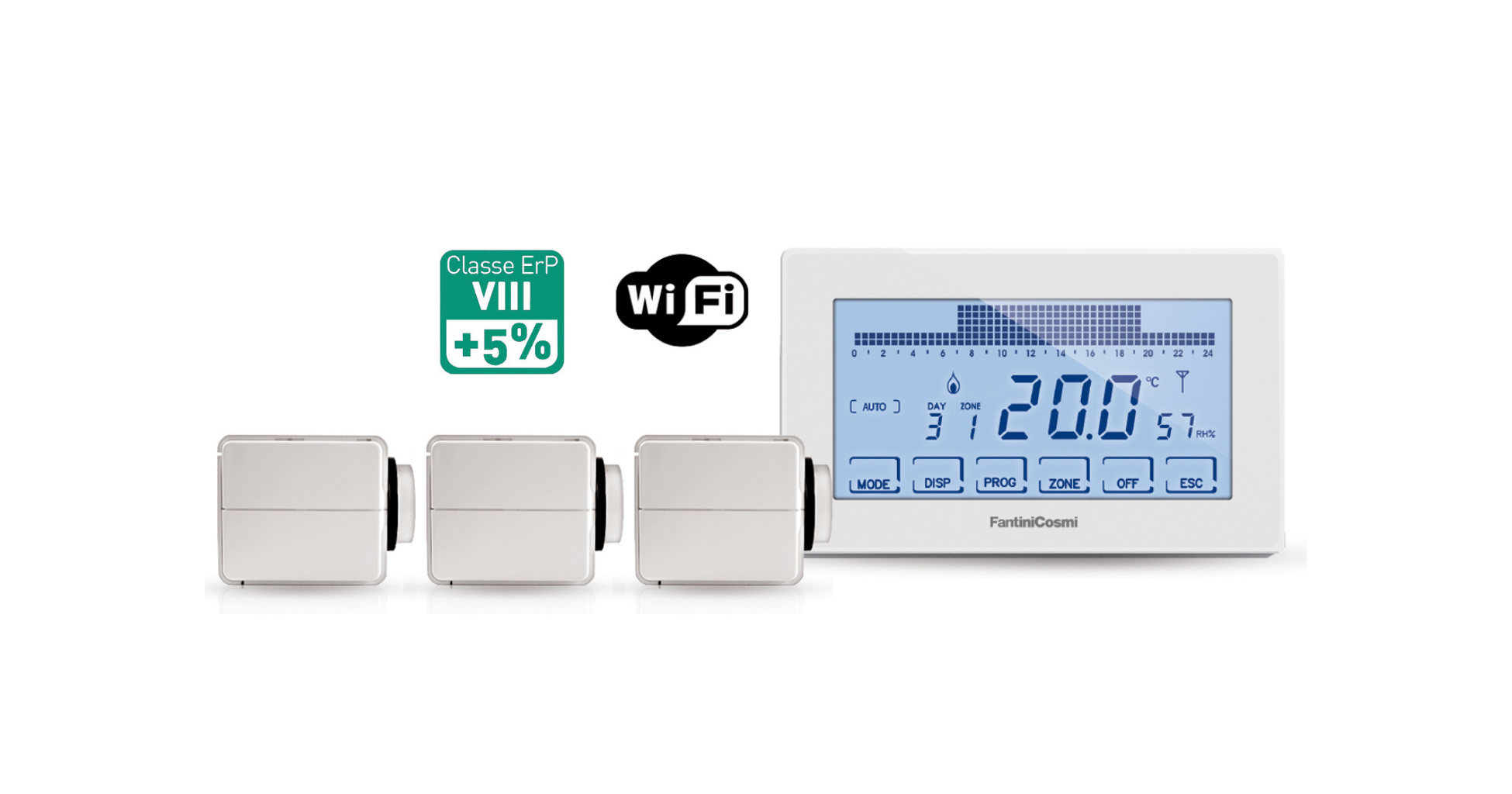The classification of temperature control systems, in Italy and in Europe, is a central issue in the field of energy efficiency. With the evolution of technology, the increasing focus on sustainability, and a regulatory system increasingly focused on reducing waste, understanding the different classes of temperature control is crucial. In this article, we will focus on classes V, VI and VIII, giving a detailed overview.
What are Advanced Temperature Control Systems?
Advanced temperature control systems are advanced devices designed to regulate and control room temperature precisely. These systems are defined on the basis of certain characteristics into two distinct families:
- Hardware – physical components such as sensors, actuators, controllers and thermostats.
- Software – includes advanced tuning algorithms, a user-friendly interface and possible connection to third-party systems such as voice assistants.
These devices, thanks to an effective and intelligent use of technology and the ability to dialogue with the various system components, guarantee optimal thermal comfort and significant energy savings.
Operation of Temperature Control Systems
At the heart of these systems is the ability to monitor temperature and other environmental parameters such as humidity in real time, in some cases even relating them to external climatic conditions. This information is then sent to a control unit which, through dedicated algorithms, regulates the switching on, switching off and modulation of the boiler or other heating and/or cooling devices, depending on the system configuration.
Temperature Control Classes: V, VI and VIII and a general overview of ErP classes
Temperature control is a key element in ensuring the living comfort and energy efficiency of buildings. In Italy, temperature control systems are classified into different categories, from class I to class VIII, according to their complexity and functionality:
- Class I: Mechanical ON/OFF room thermostat.
- Class II: Temperature control unit with modulating boiler.
- Class III: Temperature control unit with boiler ON/OFF.
- Class IV: ON/OFF room thermostat with TPI function.
- Class V: Modulating room thermostat with modulating boiler.
- Class VI: Modulating system with climate control and room sensor for compensation.
- Class VII: ON/OFF system with climate control and room sensor for compensation.
- Class VIII: Multiple room sensor system with modulating control of the output from the heating appliance.
These indications are based on European legislation published in the Official Journal of July 2014 and are valid for the whole of Europe. In the following, we will take a closer look at classes V, VI and VIII, which represent the most advanced and versatile temperature control systems available on the market.
Class V
Class V devices are modulating room thermostats. These devices are capable of varying the heat output of the boiler while maintaining continuous operation. They are ideal for environments that require very precise temperature control. Examples of this class include the C805OT remote control and the brand new C800WIFIOTRQ with WIFI connection.
Class VI
Class VI systems are known for their control capability based on multiple sensors measuring various parameters such as outdoor temperature and return water temperature. This data is then used to optimise the operation of the heating system. For example, within Fantini Cosmi products, the control units EV80, EV83, EV85, EV87 fall within this category.
Class VIII
Class VIII devices are the most advanced and offer a full range of functions, including the ability to be controlled remotely via smartphone or tablet applications. These systems can also use GPS data to activate heating when the user approaches the house. To fall within this category, systems must be equipped with an electronic temperature control with at least 3 or more room sensors and make heating dependent on the measured room temperature and the thermostat’s own sensors. The control is carried out by modulating the water flow output from the heating appliance. For example, by installing the intellicomfort multi-zone system by Fantini Cosmi, consisting of a CH180RFWiFi programmable thermostat with a minimum of 3 O60RF actuators, you fall within the classification of an advanced temperature control system of class VIII (according to Commission 2014/C 207/02).
Tax Deductions and Requirements
The adoption of advanced temperature control systems not only offers advantages in terms of comfort and energy savings. In fact, the installation of these devices gives access to significant tax deductions of 65%. It is essential, however, to fulfil all legal requirements, both in terms of the implementation of the system and in terms of taxation.
With the options available in classes V, VI and VIII, a contribution to energy efficiency of 3%, 4% and 5% respectively can be associated. This contribution, added to that of the other products in a heating system, helps to achieve the efficiency class of the entire energy label.
All that remains is to ask your installer: choosing the right temperature control system for your needs can make all the difference in terms of living comfort and energy savings.
Are you an installer or designer and would you like to keep up to date with our news and products? Sign up for our newsletter: https://www.fantinicosmi.it/newsletter/




